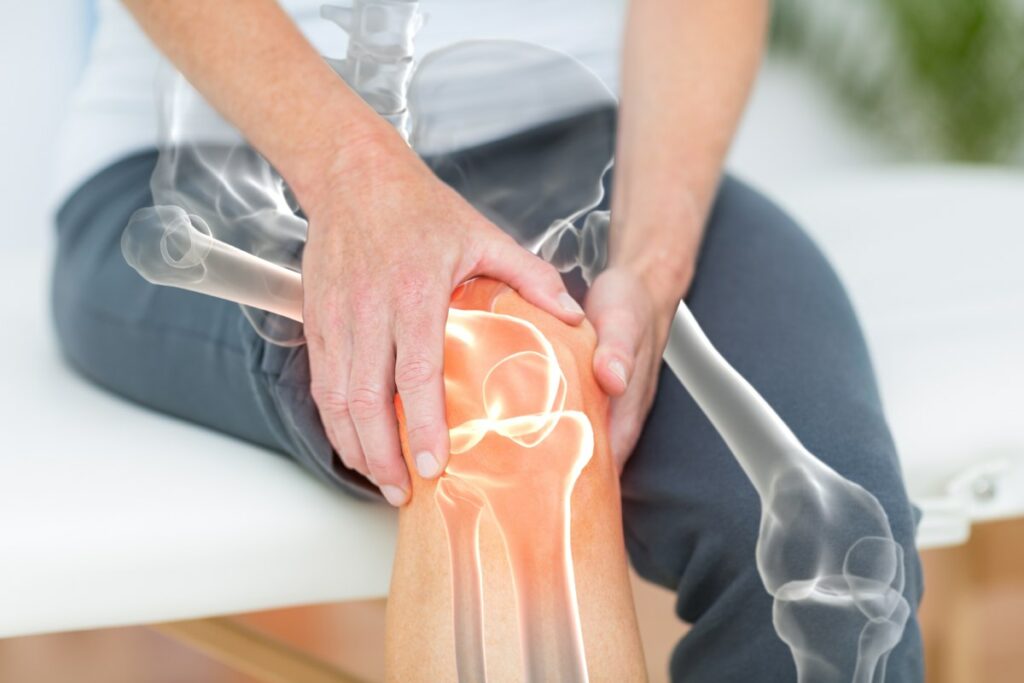Joint pain can be incredibly debilitating, making it difficult to do everyday tasks. If you are struggling with joint pain, don’t worry – you are not alone. Millions of people worldwide suffer from this condition daily. In this blog post we will discuss some of the most common strategies for joint pain management. We will also provide tips on reducing inflammation and improving your overall quality of life!

What Causes Joint Pain?
Several factors can lead to joint pain, including injury, medical conditions, and even lifestyle choices. One of the most common causes of joint pain is injury. Damage to the ligaments, tendons, or cartilage surrounding an affected joint can disrupt the smooth movement of articular surfaces, which can trigger inflammation and pain. Another major cause of joint pain is certain medical conditions such as arthritis, characterized by inflammation and breakdown of cartilage.
Finally, poor lifestyle choices can also contribute to joint pain by putting additional strain on joints or diminishing overall health. For example, a sedentary lifestyle with little exercise or poor nutrition can foster muscle weakness and advanced cartilage degeneration in joints. However, it is essential to consult a healthcare provider to develop an appropriate treatment plan in all cases. Understanding what causes joint pain may be possible to alleviate some of its symptoms and improve one’s overall quality of life.
Joint Pain Management
There are many different treatment options available for those suffering from joint pain.
Pain Medications
Pain medications are commonly used to help manage joint pain. While there are various types of pain medications available, they all work by helping to reduce inflammation and pain in the joints. Some of the most common pain medications used for joint pain management include NSAIDs, corticosteroids, and opioids. NSAIDs work by inhibiting the production of inflammatory chemicals called prostaglandins.
Corticosteroids mimic the effects of the body’s natural hormones, helping to reduce inflammation. Opioids work by binding to receptors in the brain and spinal cord, reducing pain perception. When used correctly, pain medications can be an effective way to help manage joint pain.
Ice and Heat Therapy
Another standard treatment option for joint pain is ice and heat therapy. This type of therapy can help reduce inflammation and pain in the joints. Ice therapy works by constricting blood vessels, which helps to reduce swelling. On the other hand, heat therapy dilates blood vessels and increases circulation. This can help to relax muscles and ease the pain.
Physical Therapy
Physical therapy is often recommended for those suffering from joint pain. Physical therapists work with patients to develop exercises that stretch and strengthen the muscles around affected joints. This can help to improve range of motion, increase strength, and ultimately reduce pain. In some cases, physical therapists may also use ultrasound or electrical stimulation modalities to help manage joint pain.
Surgery
In some cases, surgery may be necessary to treat joint pain. This is typically only recommended when other treatment options have failed to provide relief. Various types of surgeries can treat joint pain, depending on the cause and severity of the condition. For example, arthroscopic surgery may be used to remove damaged tissue or repair torn ligaments. Joint replacement surgery may also be an option for those with severe arthritis.
Complementary and Alternative Medicine (CAM) Therapies
Many different CAM therapies have been shown to help manage joint pain. These therapies work by helping to reduce inflammation and improve the overall quality of life. Some of the most common CAM therapies used for collaborative pain management include acupuncture, massage therapy, and Tai Chi.
Lifestyle Changes
Finally, lifestyle changes can also help manage joint pain. One of the most important lifestyle changes that can be made is to get regular exercise. Exercise helps strengthen the muscles around joints and improve the range of motion. However, it is essential to consult a healthcare provider before beginning any new exercise program. Other lifestyle changes that can help manage joint pain include losing weight, quitting smoking, and managing stress levels.
What Option Is Best For You?
Many different treatment options are available for joint pain management. The best choice for you will depend on the cause and severity of your joint pain and your overall health. It is essential to consult a healthcare provider to develop an appropriate treatment plan.
Final Thoughts
Joint pain is a common problem that can significantly impact the quality of life. While many different treatment options are available, it is essential to consult a healthcare provider to develop an appropriate plan for joint pain management. It is possible to manage joint pain and improve quality of life with the proper treatment.




